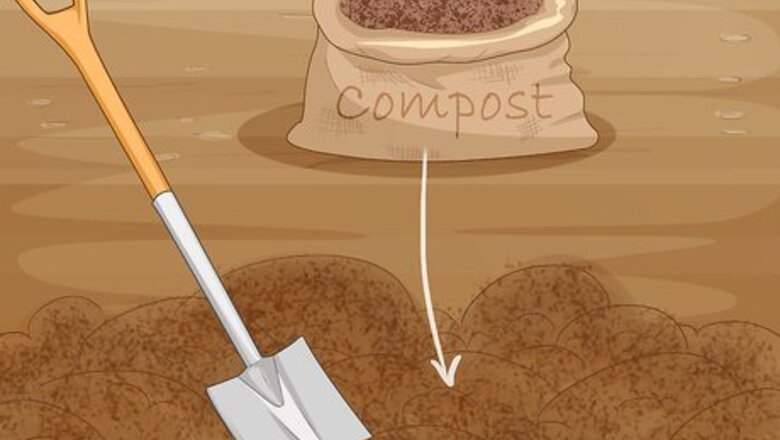
views
Creating the Right Environment
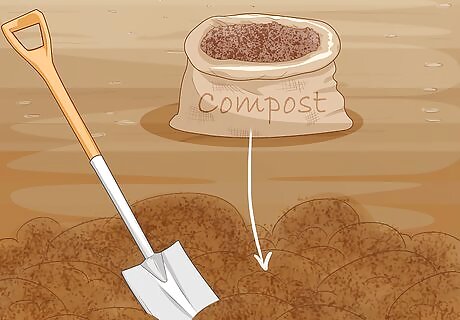
Plant or pot your celosia in soil with excellent drainage. Though celosias prefer the warm, sunny conditions of the outdoors, they’ll do just as well in a pot, planter, or urn, provided the soil around them stays nice and dry. Sandy and loamy soil types are ideal for flowers with low-moisture needs like celosias. If you don’t have a suitable soil in your growing site, or if you’re unsure about the drainage properties of your store-bought potting soil, try mixing in an organic amendment material like azomite, blood meal, or compost. Inorganic amendments like sand, gravel, and perlite can also bring down the overall amount of moisture in your soil.Tip: When selecting a container for a potted plant, check to make sure that it has multiple drainage holes on the bottom. Otherwise, water could accumulate around the roots, eventually drowning them out.
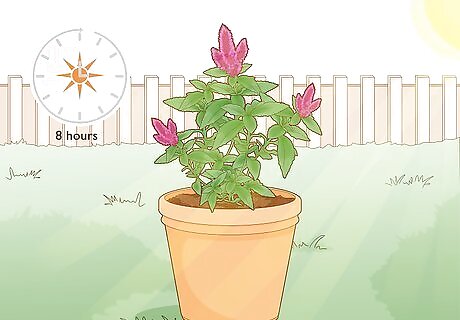
Situate your celosia where it can receive full or partial sunlight. Plant outdoor plants in places that are unobstructed by trees, houses, or other sources of shade. Position indoor plants in a south-facing window or another spot where they can get at least 8 hours of sun per day. If you live in an area that gets cold and dark during the fall and winter months, a grow lamp can help keep your celosia alive until things begin to warm back up. You can buy a grow lamp for as little as $20 online or at any greenhouse or gardening center. Celosias may not be the best choice of plant to grow in shady areas like valleys. They may also struggle in gardens or beds that run along the north side of the house or near a dim treeline.
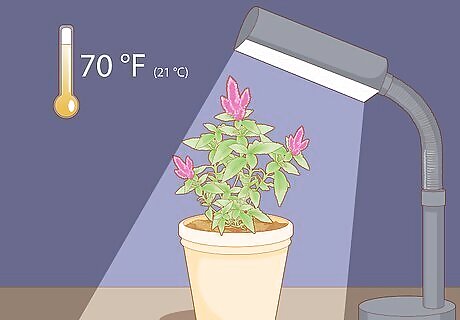
Keep your celosia as warm as possible. Celosias are native to tropical regions, which means they thrive in the heat. You’ll have the most success cultivating celosia outdoors if you live in a growing zone between 9 and 11. When raising the plant indoors, set your thermostat no lower than 64 °F (18 °C) to make sure it stays comfortable, though 70 °F (21 °C) or higher is preferable. A space heater or heat lamp can be useful for maintaining optimum growing temperatures if your home tends to be on the chilly side. While celosias are celebrated for their hardiness, low temperatures are one thing they don’t handle very well.

Spread 2–4 in (5.1–10.2 cm) of mulch around outdoor plants. If you’re cultivating your celosia in a cooler climate, it will likely benefit from an occasional mulching. A thick layer of mulch will help insulate the plant’s root system, slow moisture loss, and stabilize taller plants against strong winds and heavy precipitation. Choose an organic type of mulch, such as leaf compost or shredded wood products. These will supply your celosia with additional nutrients without leaching precious nitrogen from the soil. Mulching is also a good way to keep pesky weeds at bay.
Watering and Feeding Your Celosia
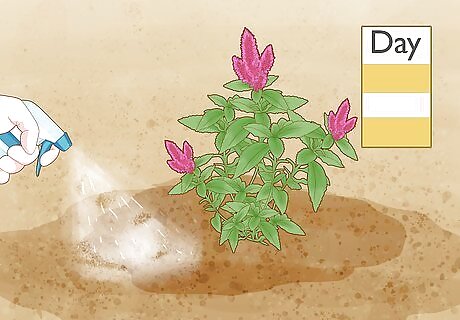
Mist the soil around your celosia with water once or twice a day. Spritz the lower part of the plant with warm or room-temperature water, and repeat as often as needed to keep the soil slightly moist. To avoid overwatering or leaving your celosia vulnerable to mildew and other moisture-related diseases, focus the spray on the leaves and soil rather than the flowers themselves. Water outdoor plants early in the day when there’s still plenty of time for excess moisture to evaporate. It's generally safe to forego watering altogether on days when the forecast calls for rain.Warning: Overwatering your celosia can cause it to wilt or take on a sickly, sagging appearance. Celosias can even die if they stay too wet for too long.
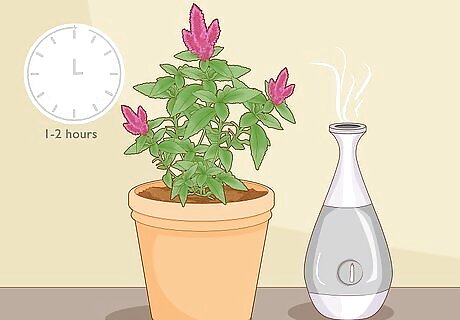
Use a source of diffuse moisture to avoid overwatering indoor plants. Run a humidifier next to your celosia for 1-2 hours per day. Alternatively, set the pot or planter inside a shallow tray of water wherever you decide to display it. This will allow your celosia to absorb as much moisture as it needs from the surrounding environment without accidentally taking in more than is good for it. Another option is to station your celosia next to the sink in your kitchen or bathroom, or another place where water regularly flows.
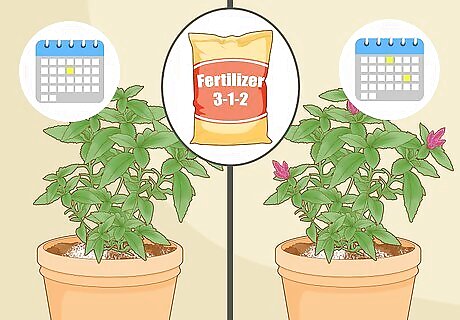
Fertilize your celosia with a nitrogen-rich fertilizer roughly once a month. Every 3-4 weeks, give your plant a small amount of concentrated liquid fertilizer. A good fertilizer will introduce vital nutrients to the soil, which in turn will improve its health, protect it against adverse conditions, and even extend its blooming period. To keep your celosia thriving, look for a fertilizer with a nitrogen ratio of around 3:1:2. Increase the frequency of your applications to once every 2 weeks once the plant begins to bloom. It will require more nutrients during its prime growing phase.
Maintaining and Propagating Celosia

Deadhead your celosia when the blooms begin to fade if desired. Near the end of the summer growing season, check your celosia for dead blooms, which will usually appear dry, brittle, and discolored. Since celosias are such rugged plants, these old blooms won’t fall off on their own. To remove them, you’ll need to either snip the spent blooms ⁄2 inch (1.3 cm) down the stem using a pair of sharp gardening shears or scissors, or pinch them off carefully by hand. It’s not strictly necessary to worry about pruning or trimming celosias. However, some gardeners like to remove dead blooms in order to make room for new growth and keep their plants looking their best.Tip: Gather up any healthy seeds that are still inside the dead blooms and place them in a plastic bag if you think you might want to propagate or share your celosia later.
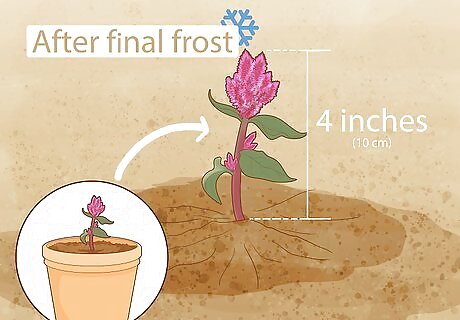
Transplant seedlings after the final frost of the season. If you’ve started your celosia from seeds indoors and decide you want to move it outside, it’s best to wait until the weather starts to warm up. Planting it in the spring will help kickstart its early growing cycle improve its chances of survival. Let your seedlings overwinter indoors until they stand approximately 4 inches (10 cm) tall, or the temperature outside is consistently above 55–60 °F (13–16 °C). Take care not to disturb your celosia’s roots during the replanting process. They’ll be extra sensitive to changes in light, moisture, and temperature, especially while they’re still growing.
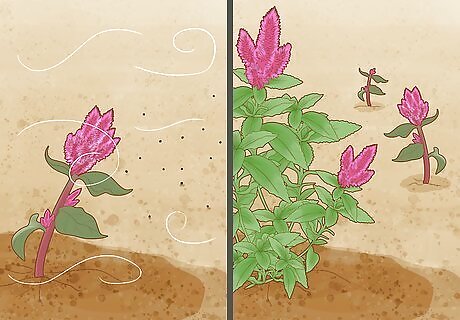
Allow outdoor celosias to reseed on their own if you want to propagate them. One of the neatest things about celosias is that they drop seeds continually, producing wave after wave of beautiful flowers without the need for you to lift a finger. Just let them do their thing and they’ll keep coming back until the growing season draws to a close! Celosias are annuals in most parts of the world, so you can expect outdoor plants to begin dying off late in the fall and make their return come spring. If you want to prevent your celosia from reseeding, it will be necessary for you to snip off the aging blooms before they have a chance to shed their seeds.


















Comments
0 comment